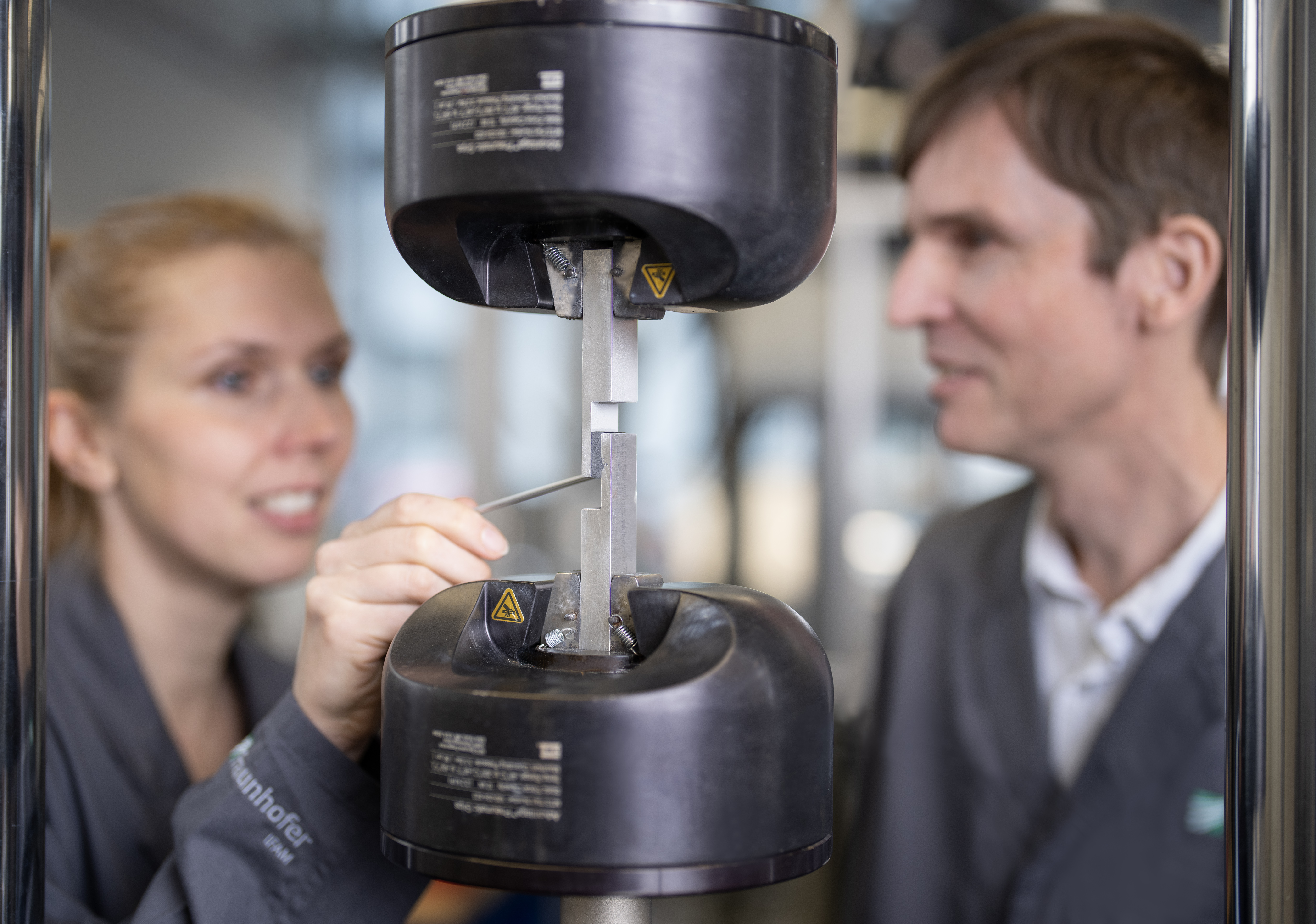Material cards for crash simulation of adhesively bonded joints
For the simulation of adhesively bonded joints, a suitably selected material model is required on the one hand, and experimentally determined model parameters for the specific adhesive on the other. Based on this, Fraunhofer IFAM determines material cards for adhesives. The institute has many years of experience, particularly in the field of cohesive zone models (CZM) in the automotive industry, and can suggest models and suitable experiments or develop them further if required.
Crash safety for the automotive industry through simulation of adhesive bonds
The calculation or simulation of adhesively bonded joints is of great importance, especially in the automotive industry. Above all, cohesive zone models (CZM) have been indispensable for crash simulation in this area since they were established in the German automotive industry in the early 2000s with the participation of our experts. Fraunhofer IFAM has extensive expertise in this area. Finite element software offers cohesive zone models in variants with different levels of complexity, which differ, for example, in terms of strain rate dependence and require different levels of testing for material card determination. Depending on the individual application, we advise you on the selection of model variants and suitable experiments.
 Fraunhofer Institute for Manufacturing Technology and Advanced Materials IFAM
Fraunhofer Institute for Manufacturing Technology and Advanced Materials IFAM

